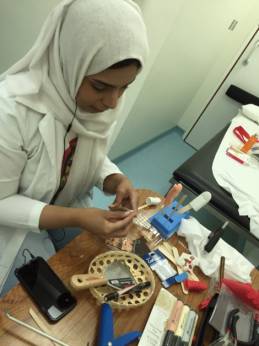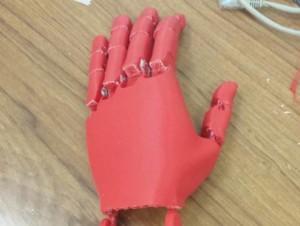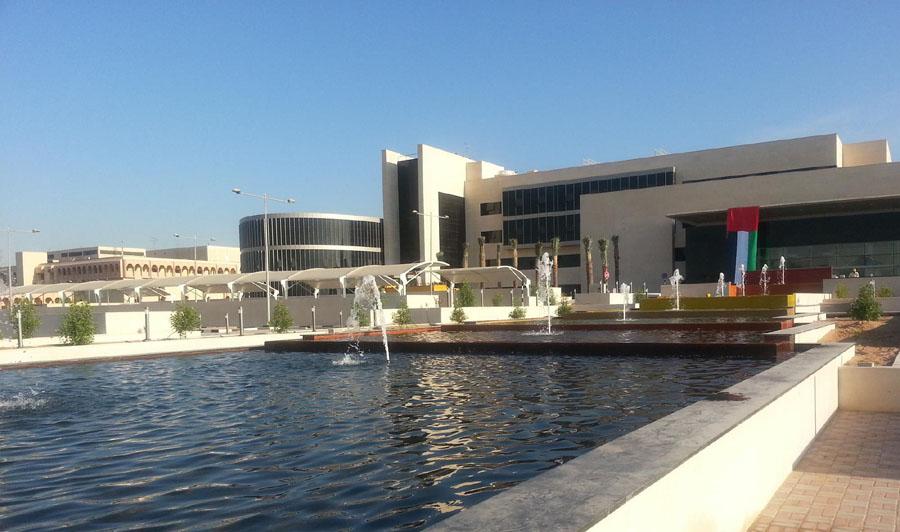UAE Hospital First in the Middle East to Use 3D Printed Models: Reassuring Patients About to Undergo Plastic Surgery
Like the rest of the medical industry, cosmetic surgery has been significantly advanced in recent years thanks to 3D printing. People who have lost noses, ears, or even their entire faces in horrific accidents can now have their features, and lives, restored in complex procedures that rely heavily on 3D modeling and printing. Despite the capabilities of the technology, however, a reconstruction of facial features is terrifying and traumatic. Imagine going into surgery, unsure of what you’re going to look like when you wake up. Doctors can provide sketches to give patients some idea of what their reconstructed faces will look like, but it’s still only an approximation.
Surgeons at Al Qassimi Hospital, located in Sharjah, United Arab Emirates, have been using 3D printed models to give patients much more accurate representations of what they can expect to see in the mirror post-surgery. Using CT scans, doctors are able to create accurate models of the skulls of even the most severely disfigured patients. From there, it’s easy to 3D print a model of the patient’s unique face shape. Printing a model of a skull takes about three days, while models of other body parts such as hands can be printed in only an hour.“The 3D prints that are created as the surgical model can help all plastic surgery patients feel a greater sense of confidence in their potential results,” plastic surgeon Dr. Mesha’al Al Nabouda told Gulf News. “Whether a person is coming in for a reconstruction or rejuvenation, I can provide exceptional precision as a benefit of this technology. It is an exciting time to work in the plastic surgery field with this type of advancement at our fingertips.”
 According to Dr. Saqr Al Mulla, deputy CEO and head of plastic surgery at Al Qassimi Hospital, the United Arab Emirates is the first country in the Middle East to use 3D printing technology for medical purposes. The UAE has been miles ahead of most countries, in fact, when it comes to innovative uses of 3D printing in all industries. Dubai is funneling a significant amount of money into the development of 3D printing technologies to reduce environmental damage, and the city also intends to construct an entirely 3D printed office building in the near future. It’s no surprise that the UAE should be leading the fray in medical 3D printing, as well.
According to Dr. Saqr Al Mulla, deputy CEO and head of plastic surgery at Al Qassimi Hospital, the United Arab Emirates is the first country in the Middle East to use 3D printing technology for medical purposes. The UAE has been miles ahead of most countries, in fact, when it comes to innovative uses of 3D printing in all industries. Dubai is funneling a significant amount of money into the development of 3D printing technologies to reduce environmental damage, and the city also intends to construct an entirely 3D printed office building in the near future. It’s no surprise that the UAE should be leading the fray in medical 3D printing, as well.
While the cosmetic surgery industry will perhaps always be associated with people who are dissatisfied with the faces they were born with, it should be better known for helping people who have lost the features they were born with, and just want them back. Those are the people that Dr. Al Mulla is most eager to help using the new technology.
“I enjoyed working with reconstruction patients because it is incredibly satisfying to make such a big difference in their lives,” he said.
Discuss this article in the Hospital 3D Printing forum on 3DPB.com.
Subscribe to Our Email Newsletter
Stay up-to-date on all the latest news from the 3D printing industry and receive information and offers from third party vendors.
You May Also Like
Gorilla Sports GE’s First 3D Printed Titanium Cast
How do you help a gorilla with a broken arm? Sounds like the start of a bad joke a zookeeper might tell, but it’s an actual dilemma recently faced by...
Nylon 3D Printed Parts Made More Functional with Coatings & Colors
Parts 3D printed from polyamide (PA, Nylon) 12 using powder bed fusion (PBF) are a mainstay in the additive manufacturing (AM) industry. While post-finishing processes have improved the porosity of...
$25M to Back Sintavia’s Largest Expansion of Metal 3D Printing Capacity Since 2019
Sintavia, the digital manufacturing company specializing in mission-critical parts for strategic sectors, announced a $25 million investment to increase its production capacity, the largest expansion to its operations since 2019....
Velo3D Initiates Public Offering in a Bid to Strengthen Financial Foundations and Drive Future Growth
Velo3D (NYSE: VLD) has been among a number of publicly traded 3D printing firms that have attempted to weather the current macroeconomic climate. After posting a challenging financial report for 2023,...


































